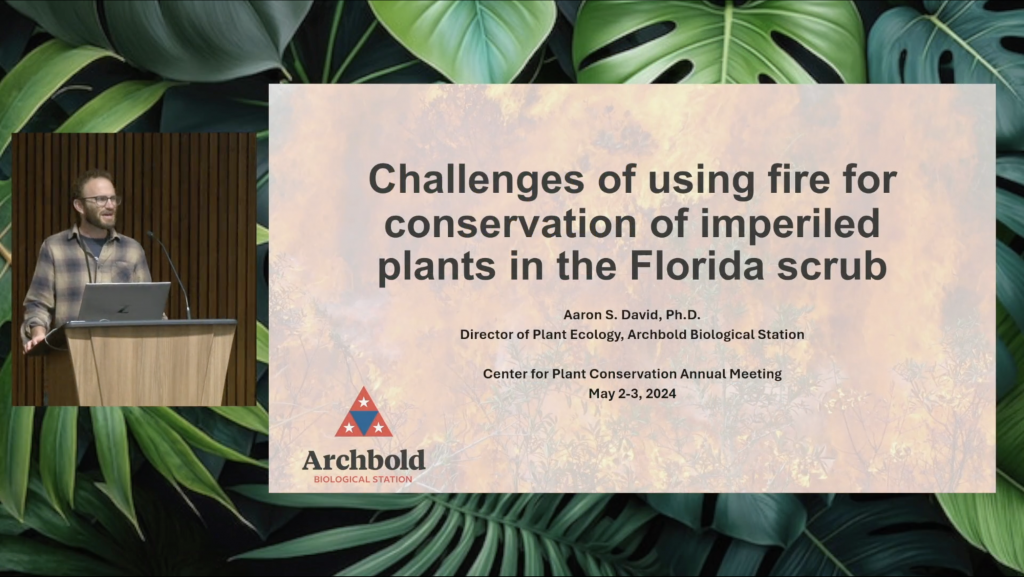
SePPCon 2024: New & Rare Species Management Maintaining population integrity in genetically diverse Erigeron (Asteraceae) populations in Western North Carolina Anastasia Wilson* (1), Dr. Katherine Mathews (1), Dr. Jacob Heiling (1), Dr. Richard Noyes (2) (1) Western Carolina University, (2) University of Central Arkansas The Erigeron strigosus Muhl. Ex Willd (Asteraceae) species complex is […]
Read More…
A fruiting Forestiera godfreyi is pictured. […]
Read More…
A reproductive Carex lutea in May is pictured along a wet ditch. […]
Read More…
Cuphea aspera flowering in May and seeds collected in July. […]
Read More…
Asclepias viridula pictured blooming in June and mature seeds in July. […]
Read More…
Sarracenia rubra sp. gulfensis populations were visited at Blackwater River State Forest by the Atlanta Botanical Garden in May, June, and November 2024. Sites were seepage slopes or streamside bogs, pictured here. Plants at the streamside bog had long flowering stalks, with multiple stalks arising from a single point. Seeds were collected in November and […]
Read More…
Hymenocallis henryae flowering in May; maturing capsules in June; and mature green fruits in July. Note the soft, brown, rotten fruit. In this species, maturity of seeds is marked by bright green, hard to the touch seeds. […]
Read More…
Rhexia parviflora in flower in June. Note the sparsely pubescent stem, presence of petioles, and the anthers which are longer than the filaments. […]
Read More…

Fire is an essential ecosystem process that must be incorporated into conservation. Yet, the proper use of fire for conservation is a delicate balancing act between maintaining habitat quality and the unique fire adaptations of each imperiled species. At Archbold Biological Station, our long-term research on wild and translocated populations of many imperiled plant species […]
Read More…
These plants spread easily because of their stoloniferous growing habit. This Coreopsis may form dense colonies in optimum growing conditions, but is not considered to be invasive. The areas searched in 2023 had dense, sporadic colonies throughout this stretch of the river. […]
Read More…
Asimina manasota plants growing in vitro at the Lindner Center for Conservation and Research of Endangered Wildlife at the Cincinnati Zoo and Botanical Garden (CREW). […]
Read More…
Capsules of Hypericum edisonianum mature sporadically, making field collection of seed difficult. By bagging immature fruit, seed can be captured as they mature. […]
Read More…
Hypericum edisonianum has a narrow range in Florida, but where it occurs, it can dominate depression marshes. […]
Read More…
Mature capsule of Hypericum edisonianum as it is just starting to dehisce. […]
Read More…
Hypericum edisonianum flowers typically have four petals, but occasionally have five. […]
Read More…
Hypericum edisonianum shrubs are found in seasonal depression marshes of south, central Florida and can grow to almost 2 meters tall. […]
Read More…
Seed collection bags help to capture seeds in case of wind or rain that might disperse them. […]
Read More…

